
DURING A VISIT TO the vast basement storerooms of Cairo's Egyptian Museum, while searching for ancient objects, such as jars and coffins, that had never been opened, Cairo University radiologist Sahar Saleem found a plain wooden coffin with an arched lid. The museum's records contained scant information about the coffin, which held one of the thousands of mummies excavated in the nineteenth and early twentieth centuries that have never been displayed or studied. The only detail Saleem was able to discover in the archives was that the coffin had been excavated in 1916 at Nag el-Hassaya, a cemetery seven miles south of the ancient city of Edfu in southern Egypt. This necropolis was the burial site for the city's residents during the Ptolemaic period (304-30 B.C.), when a dynasty of Macedonian royals named for their first pharaoh, Ptolemy I (reigned 304-284 B.C.), ruled Egypt. No further information about the coffin's original context is known, and there are no records of other objects having been found alongside it, or even in the same section of the cemetery. "When we removed the lid of the coffin, it was probably the first time it had been opened in 2.300 years." Saleem says. "Inside was a beautiful gilded wood inner coffin. After we removed that, a wrapped mummy with a golden mask appeared."
This story is from the September/October 2023 edition of Archaeology.
Start your 7-day Magzter GOLD free trial to access thousands of curated premium stories, and 8,500+ magazines and newspapers.
Already a subscriber ? Sign In
This story is from the September/October 2023 edition of Archaeology.
Start your 7-day Magzter GOLD free trial to access thousands of curated premium stories, and 8,500+ magazines and newspapers.
Already a subscriber? Sign In
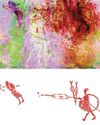
A Very Close Encounter
New research has shown that human figures painted in red on a rock art panel in central Montana depict individuals engaged in a life-or-death encounter during an especially fraught historical moment.
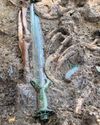
A Sword for the Ages
A zigzag pattern, now tinged with the green-blue patina of oxidized metal, adorns the octagonal hilt of a rare sword dating to the Middle Bronze Age in Germany (1600-1200 B.C.) that was recently excavated in the Bavarian town of Nördlingen.
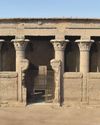
Ancient Egyptian Astrology
For centuries, layers of soot have coated the ceilings and columns in the entrance hall of Egypt's Temple of Esna. Now, an Egyptian-German team of researchers, led by Hisham El-Leithy of the Egyptian Ministry of Tourism and Antiquities and Christian Leitz of the University of Tübingen, is restoring the temple's vibrant painted reliefs to their original brilliance.
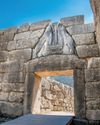
BRONZE AGE POWER PLAYERS
How Hittite kings forged diplomatic ties with a shadowy Greek city-state
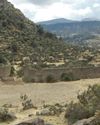
RITES OF REBELLION
Archaeologists unearth evidence of a 500-year-old resistance movement high in the Andes

Secrets of Egypt's Golden Boy
CT scans offer researchers a virtual look deep inside a mummy's coffin

When Lions Were King
Across the ancient world, people adopted the big cats as sacred symbols of power and protection

UKRAINE'S LOST CAPITAL
In 1708, Peter the Great destroyed Baturyn, a bastion of Cossack independence and culture

LAPAKAHI VILLAGE, HAWAII
Standing beside a cove on the northwest coast of the island of Hawaii, the fishing village of Lapakahi, which is surrounded by black lava stone walls, was once home to generations of fishers and farmers known throughout the archipelago for their mastery of la'au lapa'au, or the practice of traditional Hawaiian medicine. \"

A MORE COMFORTABLE RIDE
Although the date is much debated, most scholars believe people 5,000 years ago. For thousands of years after that, they did so without saddles. \"In comparison with horse riding, the development of saddles began relatively late, when riders began to care more about comfort and safety in addition to the horse's health,\" says University of Zurich archaeologist Patrick Wertmann.